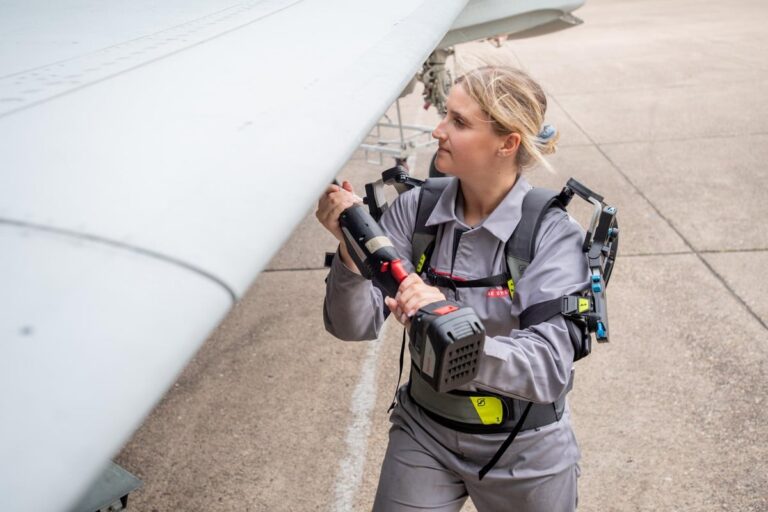

A technology showcase of Future Air Support was held at RAF Coningsby on Wednesday at RAF Coningsby, where visitors were give a first glimpse into the future of combat aircraft support by BAE Systems.
RAF Coningsby is one of two RAF Quick Reaction Alert Stations and is home to the Typhoon Force, which has just been deployed to Qatar to assist with air security during the World Cup this month.
BAE Systems work alongside the RAF to deliver fast jet support across the Typhoon fleet, and representatives from BAE Systems and the RAF were introducing both current and potential future technologies and ideas at the showcase on Wednesday (November 2), and allowed visitors to see first-hand the technologies in action.
Chris Payne, of BAE Systems said at the event: “We’re proud to stand and work alongside the RAF. We need to keep the aircraft relevent and enhance new technology as we go through this journey.
“The key thing is delivering frontline support and capability of the aircraft and that’s the key thing a manufacturer can bring to the RAF.
“We’re here to show how we are moving forward and keeping pace with change and how we can bring that support into the future.”
One of the new technologies are Exoskeletons, which will allow aircrew and maintenance teams to safely handle and articulate greater loads, working in tandem with autonomous cobots.
The exoskeletons, explained BAE Systems’s head of technology delivery for training and support Nick Sharples, allows the wearer to become “super-human”, and is currently undergoing trials among BAE crew.
The device supports the arms and upper body to allow them to carry out work with the arms raised for longer, such as removing panels from the underside of aircrafts, without the arms becoming fatigued.
Data can be visualised in new ways with AR headsets, which will allow aircraft maintainers to have hands-free access to technical publications and the ability to view a digital twin of the aircraft and its maintenance history.
Inspections could also be given an upgrade with the use of digital inspection technologies.
This is used when the aircraft lands and is pulled into the hangar and the craft is inspected with optical projection technology, which highlights any features that need to be investigated, such as any damage to the aircraft or screws which need to be tightened.
Sustainable operations will also see synthetic training delivered to pilots and aircrew and maximising use of renewable resources to help the RAF meet its target to reach net zero by 2040.
One of these is the use of electric Ground Power Units (GPU) instead of diesel ones, which will reduce carbon emissions by 90 per cent.
Other new technologies include passive and active RF tags, which are attached to valuable tools and other items and, using antennae, to make the items easy to locate using tracking GPS.